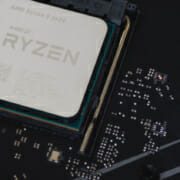How To Measure App Performance To Release Better App Updates
Anytime you roll out app updates, you should measure your app’s performance. The data you collect will reveal much about your app and whether it’s gaining traction with users. Moreover, you’ll gain greater insight into your app, allowing you to work on more meaningful future updates.
1. How To Track App Usage Growth
As an appreneur, you’re not only concerned with releasing a quality app but also measuring its performance. You’ll want to keep tabs on app usage growth by implementing analytics and checking all relevant data points regularly. For example, you’ll need to know how many downloads you’re getting on a daily, weekly, and monthly basis. And, also keep an eye on any sharp spikes or declines and quickly ascertain why these occur.
There are several powerful analytics tools that you can use, such as App Annie, Apple App Analytics, and Google Analytics. These will give you insight into how well your application is performing in the app stores. Of course, the more well-versed you’re in understanding this data and utilizing these analytics tools, the more likely you’ll improve app user acquisition. But if this seems intimidating, it’s best to work with a professional studio, such as NS804, to help you with your App Store Optimization (ASO) strategy.
2. Why You Should Track Feedback After App Updates
Users can potentially become your biggest fans but also your staunchest critics. The latter may not be fun to deal with, as nobody wants to hear that their app isn’t meeting expectations. However, you must set up a robust pipeline to gather and keep track of all user feedback, especially after rolling out app updates.
After all, a big part of maintaining a mobile app involves listening and responding to user feedback consistently. Your pipeline should allow you to comb through and respond to feedback as quickly as possible. Positive feedback means that you’re on the right track, but negative feedback reveals issues with your app that you need to address. If you do listen to feedback and address these issues, then you’ll increase app usage growth. But if you choose to ignore your users, you risk losing them and having your app stagnate.
3. Why You Should Measure App User Acquisition Type
Many of the best analytics tools allow for greater granularity, allowing you to look at user data in detail. And this data can help you determine whether app user acquisition is either paid or organic. But you should also be measuring whether app updates spur further growth of your app. You may have added new features and made changes to the UI/UX to improve user retention, but you’ll never know for sure until you start measuring these data points.
4. How To Track Overall Engagement
You can track the overall engagement of your app by measuring average session length, daily active users (DAU), monthly active users (MAU), retention rate, exit rate, churn rate, and stickiness ratio. Here’s a quick breakdown of these and their respective formulas:
- Average session length – Amount of time users spend on your app: Total duration of all sessions in seconds during a set time frame / total number of sessions during that time frame
- Daily Active Users (DAU) & Monthly Active Users (MAU) – The number of users who use your app: The number of DAU or MAU
- Retention Rate – The number of users who use your app during a given time frame: Number of users at the end of a period – number of users acquired during this period / number of users at the beginning of this period x 100
- Exit Rate – The number of users who leave specific screens: Total number of visits to a screen / total number of exits from a specific screen
- Churn Rate – The rate at which users uninstall the app: 1 – Retention Rate
- Stickiness Ratio – The number of users who return to the app monthly: DAU / MAU x 100
In Conclusion
Measuring app user growth should always be a top priority for any budding or experienced appreneur. Contact us today to learn how NS804 can help you with your app user acquisition strategy.













Leave a Reply
Want to join the discussion?Feel free to contribute!